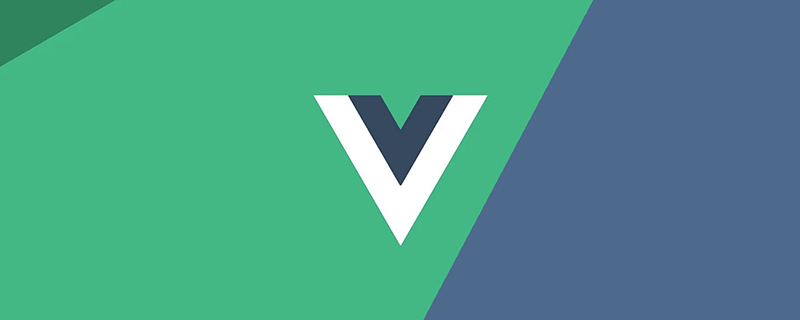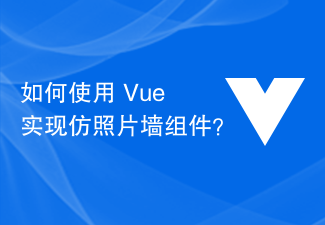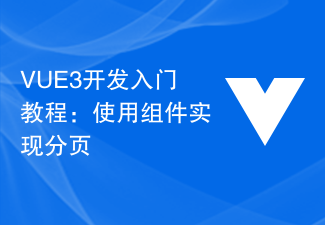This article mainly introduces the encapsulation example of the Vue2.0 multi-Tab switching component. The content is quite good. I will share it with you now and give it as a reference.
Vue2.0 multi-Tab switching component is simply encapsulated to meet its own simple functions and can be used directly!
First of all, the renderings:

A brief introduction to the function:
1. Support tab switching
2. Support tab positioning
3. Support tab automation
Imitate React multi-Tab implementation. In short, it can be used normally to meet daily needs.
1. Usage:
==index.vue file==
<TabItems>
<p name="买入" class="first">
<Content :isContTab = "0" />
</p>
<p name="自动再平衡" class="second">
<Content :isContTab = "1" />
</p>
<p name="一键卖出" class="three">
<Content :isContTab = "2" />
</p>
</TabItems>
PS: TabItems is my TabSwitch component, tab page The title is the name value in p, and the two sides are the content, which can also be a subcomponent.
Next show the TabItems component
2, component
index.less file
body,html {margin: 0;}
* {
opacity: 1;
-webkit-backface-visibility: hidden;
}
.tabItems {
.Tab_tittle_wrap {
position: absolute;
width: 100%;
top: 0;
z-index: 2;
background: @ffffff;
display: -webkit-box;
height: 80px;
line-height: 80px;
text-align: center;
color: @222222;
border-bottom: 1px solid rgba(46, 177, 255, 0.08);
box-shadow: 0px 0px 25px 6px rgba(46, 177, 255, 0.21);
span {
display: block;
text-align: center;
width: 26%;
margin: 0 24px;
font-size: 26px;
position: relative;
i {
display: inline-block;
position: absolute;
width: 1px;
height: 50px;
top: 15px;
right: -24px;
background: @dddddd;
}
&:last-child {
i {
display: none;
}
}
}
.router-link-active {
color: #8097f9;
border-bottom: 1px solid #8097f9;
}
}
.Tab_item_wrap {
position: absolute;
top: 82px;
width: 100%;
z-index: 0;
background: @ffffff;
bottom: 0;
overflow-x: hidden;
-webkit-overflow-scrolling: touch;
}
.showAnminous {
opacity: 1;
-webkit-backface-visibility: hidden;
-webkit-animation-name: "rightMove";
/*动画名称,需要跟@keyframes定义的名称一致*/
-webkit-animation-duration: .3s;
/*动画持续的时间长*/
-webkit-animation-iteration-count: 1;
/*动画循环播放的次数为1 infinite为无限次*/
}
}
@-webkit-keyframes rightMove {
0% {
-webkit-transform: translate(110%, 0);
}
100% {
-webkit-transform: translate(0, 0);
}
}
@-ms-keyframes rightMove {
0% {
-ms-transform: translate(110%, 0);
}
100% {
-ms-transform: translate(0, 0);
}
}
@keyframes rightMove {
0% {
-webkit-transform: translate(110%, 0);
-ms-transform: translate(110%, 0);
transform: translate(110%, 0);
}
100% {
-webkit-transform: translate(0, 0);
-ms-transform: translate(0, 0);
transform: translate(0, 0);
}
}
TabItems.vue
<template>
<p class="tabItems">
<p class="Tab_tittle_wrap" @click="tabswitch">
<span v-for="(v,i) in tabTitle" :style="{width:(100/tabTitle.length-7.5)+'%'}" :class="isShowTab==i?'router-link-active':''">{{v}}<i></i></span>
</p>
<p class="Tab_item_wrap">
<slot></slot>
</p>
</p>
</template>
<style lang="less">
@import "./less/index";
</style>
<script>
export default {
data() {
return {
tabTitle: [],
isShowTab: 0,
}
},
created: function() {
let is = sessionStorage.getItem("isTabShow");
if(is) {
this.isShowTab = is;
} else {
let URL = libUtils.GetURLParamObj();
this.isShowTab = URL.isShowTab ? URL.isShowTab : "0";
}
setTimeout(function() {
this.tabswitch(document.querySelector(".Tab_tittle_wrap").children[this.isShowTab].click());
}.bind(this), 0);
},
mounted() {
let slot = this.$slots.default;
for(let i = 0; i < slot.length; i++) {
if(slot[i].tag == "p") {
this.tabTitle.push(slot[i].data.attrs.name);
if(slot[i].elm) {
slot[i].elm.className = "hide";
if(this.isShowTab == i) {
slot[i].elm.className = "";
}
};
}
}
},
methods: {
tabswitch() {
if(!event) return;
let target = event.target;
if(target.nodeName.toLowerCase() !== 'span') {
return;
}
let len = target.parentNode.children;
for(let i = 0; i < len.length; i++) {
len[i].index = i;
len[i].removeAttribute('class');
}
target.setAttribute('class', 'router-link-active');
this.isShowTab = target.index;
//tabItems
let child = this.$el.children[1].children;
for(let k = 0; k < child.length; k++) {
child[k].className = "hide";
if(k == target.index) {
child[k].className = "showAnminous";
}
}
try {
sessionStorage.setItem("isTabShow", target.index);
} catch(err) {
console.log(err);
}
}
}
}
</script>
PS:
created and mounted are not required for these two methods Too much introduction, Vue life cycle
1, introduction to created method.
Get the browser link address: libUtils.GetURLParamObj(); Get the browser link address
createdThis method is mainly used to locate which page the tab specifically displays
2. Introduction to mounted method
Mainly used to hide content containers
3. Tabswitch method
The page used to switch the display of the component container!
The above is the entire content of this article. I hope it will be helpful to everyone's study. For more related content, please pay attention to the PHP Chinese website!
Related recommendations:
Introduction to the development of Vue drag and drop components
Vue adds request interceptor and vue-resource Use of interceptors
The above is the detailed content of Introduction to encapsulation of Vue2.0 multi-Tab switching component. For more information, please follow other related articles on the PHP Chinese website!
 VUE3开发基础:使用extends继承组件Jun 16, 2023 am 08:58 AM
VUE3开发基础:使用extends继承组件Jun 16, 2023 am 08:58 AMVue是目前最流行的前端框架之一,而VUE3则是Vue框架的最新版本,相较于VUE2,VUE3具备了更高的性能和更出色的开发体验,成为了众多开发者的首选。在VUE3中,使用extends继承组件是一个非常实用的开发方式,本文将为大家介绍如何使用extends继承组件。extends是什么?在Vue中,extends是一个非常实用的属性,它可以用于子组件继承父
 如何使用 Vue 实现日历组件?Jun 25, 2023 pm 01:28 PM
如何使用 Vue 实现日历组件?Jun 25, 2023 pm 01:28 PMVue是一款非常流行的前端框架,它提供了很多工具和功能,如组件化、数据绑定、事件处理等,能够帮助开发者构建出高效、灵活和易维护的Web应用程序。在这篇文章中,我来介绍如何使用Vue实现一个日历组件。1、需求分析首先,我们需要分析一下这个日历组件的需求。一个基本的日历应该具备以下功能:展示当前月份的日历页面;支持切换到前一月或下一月;支持点击某一天,
 聊聊Vue怎么通过JSX动态渲染组件Dec 05, 2022 pm 06:52 PM
聊聊Vue怎么通过JSX动态渲染组件Dec 05, 2022 pm 06:52 PMVue怎么通过JSX动态渲染组件?下面本篇文章给大家介绍一下Vue高效通过JSX动态渲染组件的方法,希望对大家有所帮助!
 VSCode插件分享:一个实时预览Vue/React组件的插件Mar 17, 2022 pm 08:07 PM
VSCode插件分享:一个实时预览Vue/React组件的插件Mar 17, 2022 pm 08:07 PM在VSCode中开发Vue/React组件时,怎么实时预览组件?本篇文章就给大家分享一个VSCode 中实时预览Vue/React组件的插件,希望对大家有所帮助!
 如何使用 Vue 实现仿照片墙组件?Jun 25, 2023 am 08:19 AM
如何使用 Vue 实现仿照片墙组件?Jun 25, 2023 am 08:19 AM在现代Web开发中,组件化是一个极受欢迎的开发模式。而Vue.js则是一个非常适合组件化的前端框架。在这篇文章中,我们将介绍如何使用Vue.js创建一个仿照片墙组件。在开始之前,我们需要明确一些准备工作。首先,我们需要安装Vue.js。安装的方法非常简单,只需在终端中输入以下命令:npminstallvue安装完成后,我们可以创建一个名为
 VUE3开发入门教程:使用组件实现分页Jun 16, 2023 am 08:48 AM
VUE3开发入门教程:使用组件实现分页Jun 16, 2023 am 08:48 AMVUE3开发入门教程:使用组件实现分页分页是一个常见的需求,因为在实际开发中,我们往往需要将大量的数据分成若干页以展示给用户。在VUE3开发中,可以通过使用组件实现分页功能,本文将介绍如何使用组件实现简单的分页功能。1.创建组件首先,我们需要创建一个分页组件,使用“vuecreate”命令创建VUE项目,并在src/components目录下创建Pagin
 Vue 中如何实现分页组件?Jun 25, 2023 am 08:23 AM
Vue 中如何实现分页组件?Jun 25, 2023 am 08:23 AMVue是一款优秀的前端框架,在处理大量数据时,分页组件是必不可少的。分页组件可以使页面更加整洁,同时也可以提高用户体验。在Vue中,实现一个分页组件并不复杂,本文将介绍Vue如何实现分页组件。一、需求分析在实现分页组件前,我们需要对需求进行分析。一个基本的分页组件需要具有以下功能:展示当前页数、总页数以及每页展示条数点击分页按钮可以切换至不同页数展示当前页
 VUE3初学者入门:使用Vue.js组件组合实现可复用组合Jun 15, 2023 pm 08:53 PM
VUE3初学者入门:使用Vue.js组件组合实现可复用组合Jun 15, 2023 pm 08:53 PMVue.js是一款流行的前端JavaScript框架,它提供了一种简单易用的方式来构建动态网页应用程序。Vue.js的主要特点是其模块化的设计和可插拔的组件系统。这使得开发者可以轻松地创建可复用的组件,从而提高了应用程序的重用性和可维护性。在本文中,我们将重点介绍VUE3初学者如何使用Vue.js组件组合实现可复用组合。Vue.js组件是一个完整的封装元素,


Hot AI Tools

Undresser.AI Undress
AI-powered app for creating realistic nude photos

AI Clothes Remover
Online AI tool for removing clothes from photos.

Undress AI Tool
Undress images for free

Clothoff.io
AI clothes remover

AI Hentai Generator
Generate AI Hentai for free.

Hot Article

Hot Tools

MinGW - Minimalist GNU for Windows
This project is in the process of being migrated to osdn.net/projects/mingw, you can continue to follow us there. MinGW: A native Windows port of the GNU Compiler Collection (GCC), freely distributable import libraries and header files for building native Windows applications; includes extensions to the MSVC runtime to support C99 functionality. All MinGW software can run on 64-bit Windows platforms.

DVWA
Damn Vulnerable Web App (DVWA) is a PHP/MySQL web application that is very vulnerable. Its main goals are to be an aid for security professionals to test their skills and tools in a legal environment, to help web developers better understand the process of securing web applications, and to help teachers/students teach/learn in a classroom environment Web application security. The goal of DVWA is to practice some of the most common web vulnerabilities through a simple and straightforward interface, with varying degrees of difficulty. Please note that this software

SecLists
SecLists is the ultimate security tester's companion. It is a collection of various types of lists that are frequently used during security assessments, all in one place. SecLists helps make security testing more efficient and productive by conveniently providing all the lists a security tester might need. List types include usernames, passwords, URLs, fuzzing payloads, sensitive data patterns, web shells, and more. The tester can simply pull this repository onto a new test machine and he will have access to every type of list he needs.

WebStorm Mac version
Useful JavaScript development tools

SublimeText3 Linux new version
SublimeText3 Linux latest version






